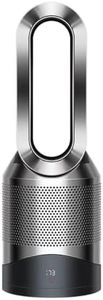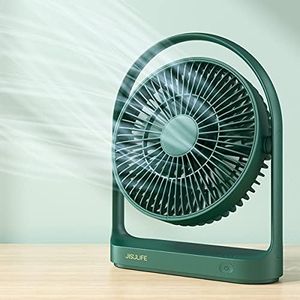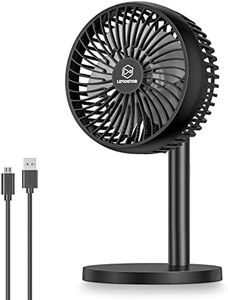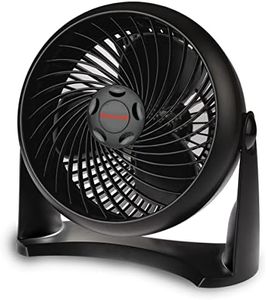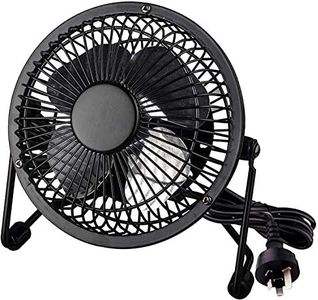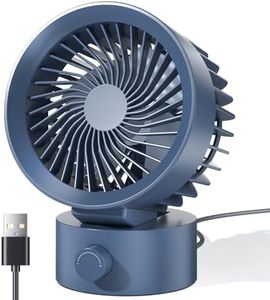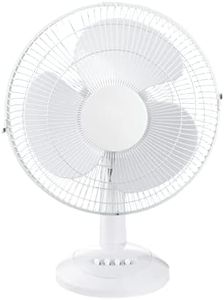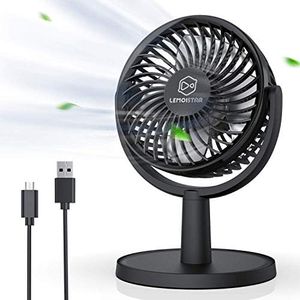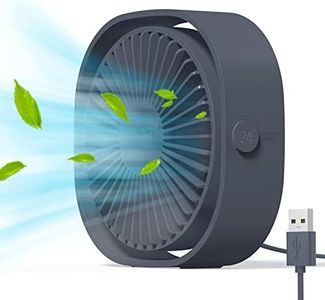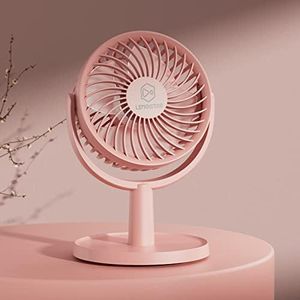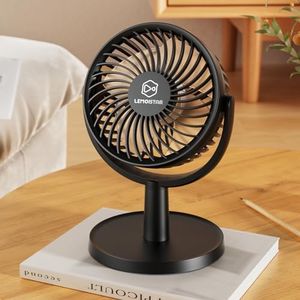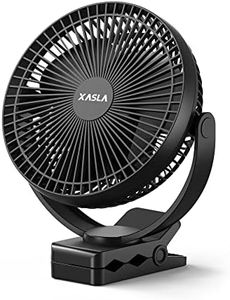We Use CookiesWe use cookies to enhance the security, performance,
functionality and for analytical and promotional activities. By continuing to browse this site you
are agreeing to our privacy policy
10 Best Desk Fans
From leading brands and best sellers available on the web.By clicking on a link to a third party's website, log data is shared with that third party.
Buying Guide for the Best Desk Fans
Choosing a desk fan might seem simple, but picking the right one can really improve your comfort and productivity. The best desk fan for you will depend on your room size, how much airflow you want, the amount of noise you’re comfortable with, and any extra features you might appreciate. There isn’t a one-size-fits-all answer, so thinking about your daily routine and where you’ll use the fan can help guide your choice. Take your time to look at the key specifications below to help you make a smart choice.Fan SizeFan size refers to the diameter of the fan blades or the overall width of the fan unit. This is important because it affects how much air the fan can move and how much space it will take up on your desk. Smaller fans, typically 4–6 inches, are great for tight spaces or if you only need a gentle breeze for personal use. Medium fans, around 7–10 inches, offer a balance between airflow and space and work well for most desks. Larger fans, 11 inches and up, provide stronger airflow but may take up more room and can be bulkier. Think about how much desk space you have and whether you want a strong breeze or just a light airflow.
Airflow (CFM)Airflow is usually measured in CFM or 'cubic feet per minute,' which tells you how much air the fan can move. This matters because higher airflow means more cooling power. Low CFM fans (under 150) are ideal for personal use at very close range or small offices. Mid-range CFM fans (150–350) suit most desk setups, providing noticeable cooling without being too overpowering. High CFM fans (over 350) are good for larger rooms or for those who want maximum air circulation. To pick the right airflow, consider your room size and whether you just need a focused breeze or a wider area to be cooled.
Noise LevelNoise level describes how loud the fan is when running, generally measured in decibels (dB). This is crucial if you plan to use the fan in quiet environments like offices or bedrooms. Quiet fans (below 40 dB) are whisper-soft and won’t disturb phone calls or concentration. Moderate noise levels (40–55 dB) are similar to background music and might be a fair compromise for more airflow. Loud fans (over 55 dB) might be distracting during focused work. If you’re sensitive to noise or will use the fan in a shared space, look for models labeled as “quiet” or check the dB rating for reference.
Speed SettingsSpeed settings determine how much you can control the strength of the fan's airflow. Fans with just one or two speeds are simple to use but may limit your ability to adjust comfort levels. Models offering three or more speed settings give you more flexibility to choose the breeze that feels right. If your needs change throughout the day (for example, stronger during hot afternoons, lighter in the morning), more speed options will suit you better.
AdjustabilityAdjustability refers to whether you can tilt, pivot, or oscillate the fan to direct airflow where you need it. Fixed fans blow air in a single direction, which is fine if you’ll always sit in the same spot. Tilting or pivoting fans let you adjust the angle up or down, making them more versatile for changing positions. Oscillating fans sweep side to side, distributing air throughout a wider area—helpful if more than one person is at the desk or if you want to circulate air around the entire room. The best option depends on whether you need a focused breeze or wider cooling coverage.
Power SourceDesk fans can be powered by USB, batteries, or an AC wall plug. USB-powered fans are super convenient for computer desks and portability but may be less powerful. Battery-operated fans offer cordless ease, good for places with limited outlets but require regular recharging or changing batteries. Plug-in (AC) fans deliver stronger and more consistent performance but limit placement to areas near outlets. Think about where you’ll use the fan most and what type of power connection is most convenient.
Additional FeaturesSome desk fans come with extra features like built-in timers, remote control, air purification filters, or even aromatherapy pads. These features aren’t essential for everyone, but they can add to your comfort or make the fan more versatile. If you prefer hands-off control, look for a remote or timer. For allergies or a fresh scent, consider fans with filters or fragrance options. Decide which extras, if any, fit your lifestyle or workspace.
